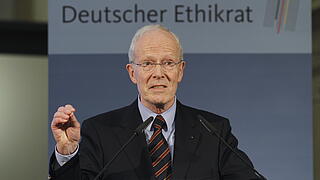How we deal with the inevitability of death raises fundamental questions about our understanding of ourselves as human beings. They address the scope for planning and accompanying dying as a natural part of life, and ask whether it is part of personal freedom to end one’s own life. Today modern medicine is able to significantly prolong life. However, this also increases the risk of prolonged dying after lingering and painful illness. It challenges both individuals and society as a whole to time and again reflect on the circumstances of dying and death.
In this context, a profound understanding of the phenomenon of death is essential. At its centre is the ontological question of how to define the death of a human being. Criteria for death such as the brain death criterion or the cardiopulmonary criterion form the legal and ethical framework for decisions at the end of life. Depending on the definition, the acceptability of taking or omitting medical measures may change, thereby also limiting the possibilities for advance directives, palliative care, as well as for organ donation. Equally important is the epistemological question of how death can be determined. An answer to this question must refer to criteria of death and to specific clinical procedures for its determination.
In recent years, the growing legal recognition of advance directives has expanded the possibilities of self-determination at the end of life. Expanding palliative medicine and hospice work also helps to reduce fears of unbearable pain, loneliness and being determined by others during the process of dying. All these options can also be seen as suicide prevention for that matter. When they fail or fail to convince, some people consider suicide as the only way out. In Germany, neither suicide or attempted suicide nor assisted suicide are punishable by law. Euthanasia, though, is punishable by law. However, the boundaries between the various forms of intervening in another person’s dying, becoming apparent, for example, in the distinctions between active vs. passive or direct vs. indirect euthanasia, are often blurred and their ethical assessment remains controversial.









